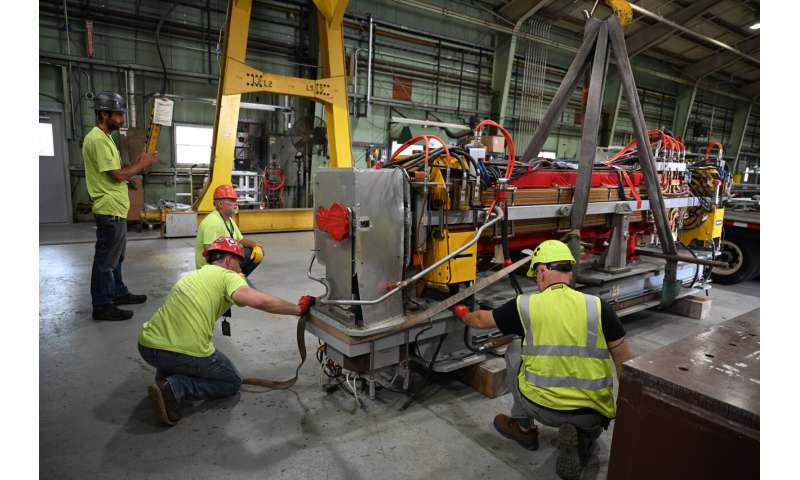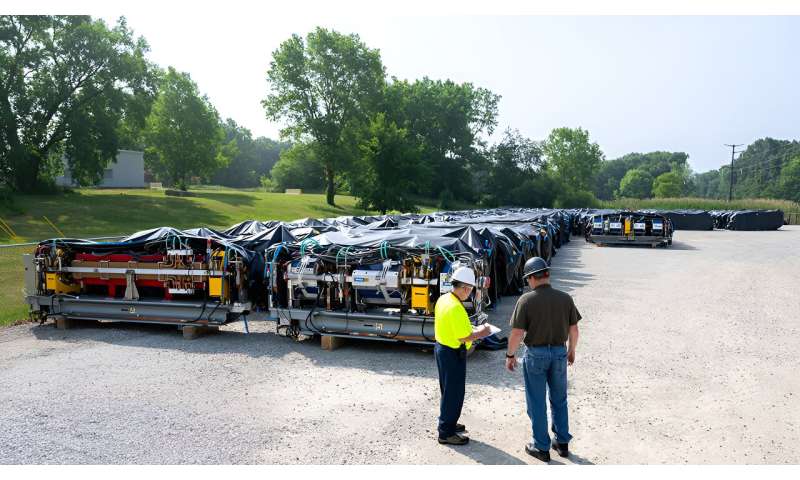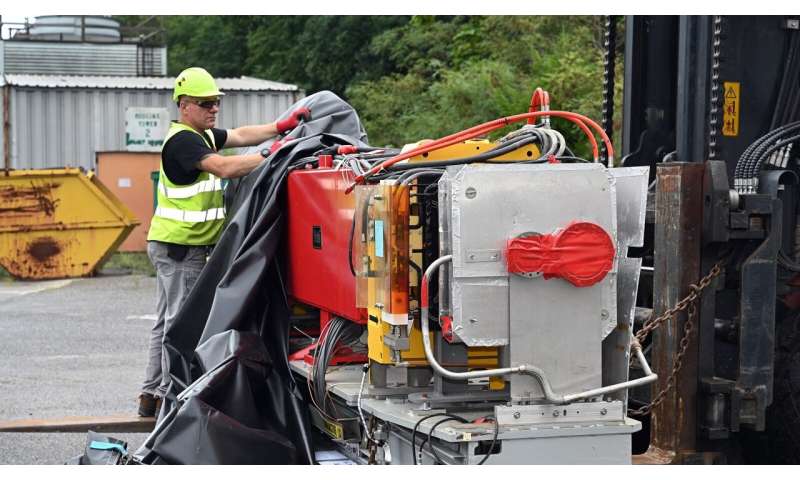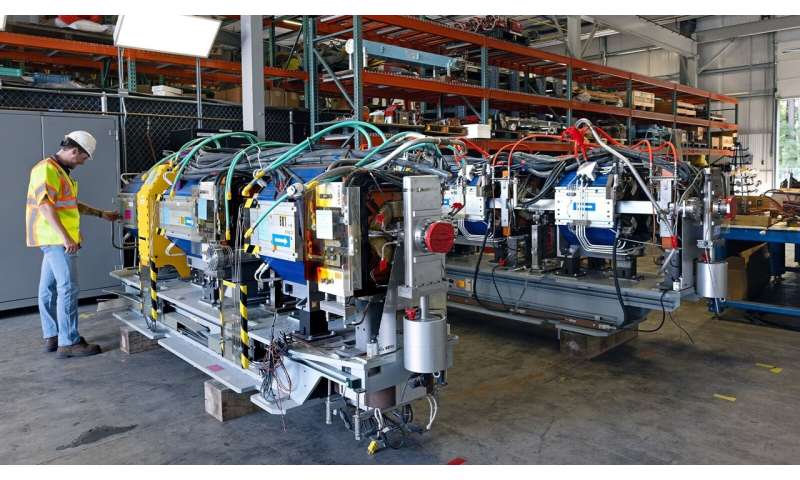Argonne to recycle magnets from advanced photon source in new physics experiment at Brookhaven

Like cats, magnets for physics experiments can have many lives.
In 2015, researchers at the U.S. Department of Energy's (DOE) Argonne National Laboratory repurposed two MRI magnets as part of a physics experiment to look at the fundamental properties of a particle called a muon. In an even bigger magnet recycling success, today scientists at Argonne are helping to repurpose magnets swapped out from the laboratory's Advanced Photon Source (APS) for use in a new machine being built in New York by two of Argonne's sister DOE laboratories, Brookhaven National Laboratory and Thomas Jefferson National Accelerator Facility (Jefferson Lab).
The APS is undergoing an extensive upgrade, and the 30-year-old magnets from the facility's storage ring are being replaced with more state-of-the-art technology. The original APS magnets still work perfectly well, however. Rather than being allowed to gather dust, Argonne plans to ship them to Brookhaven and Jefferson Lab, where they will be re-purposed for use as part of the Electron-Ion Collider (EIC), a state-of-the-art particle collider being led by those other two labs and that will be built at Brookhaven.

The ability to use recycled magnets in lieu of new ones creates a taxpayer savings of approximately 10 million dollars, said Brookhaven's Christoph Montag, the system manager for EIC's electron storage ring at Brookhaven. "I always had this pipe dream of building my machine from recycled parts," he said. "It's truly a win-win situation."
This collaboration serves as a prime example of the commitment of the DOE national laboratories to conducting groundbreaking experiments while at the same time maintaining cost-effective sustainable practices. "By repurposing these magnets, America's leading scientific institutions can significantly reduce waste and save money while simultaneously advancing scientific frontiers," said Argonne's Jim Kerby, director of the APS Upgrade.
The EIC will be a groundbreaking machine for nuclear physics. By smashing electrons into protons and other low-mass and heavier ions, scientists hope to gain new insights into the fundamental structure of matter. With these repurposed magnets, the machine will stand poised to make pivotal discoveries.

"The EIC will be the most ambitious accelerator project that DOE has ever done," said Argonne's John Byrd, director of the APS Accelerator Systems Division. "In building the EIC, scientists are taking almost every aspect of what we've ever learned about building accelerators and combining them all in one project. At Argonne, we're contributing not just our magnets but also our expertise to the design of the facility."
In total, the EIC will acquire roughly 700 magnets from Argonne. Since several major scientific facilities around the world are also undergoing construction or upgrades, getting recycled magnets helps avoid any supply chain issues, Montag said.
The magnets that the EIC team are acquiring from Argonne largely fall into two different categories: quadrupoles and sextupoles. In an electron storage ring—like that of both the APS and the EIC—quadrupole magnets act like lenses to help to focus the electron beam, preventing it from spreading out, while sextupole magnets correct any aberration in the electron beam introduced by the quadrupoles.

According to EIC Associate Project Manager James Fast of Jefferson Lab, EIC scientists will only need to slightly recondition the magnets in order for them to be usable in the EIC. "It's incredibly fortunate that the APS magnets could pretty much just be swapped right in," he said. "It's an almost perfect match."
Fast said that the magnet girders containing the quadrupoles will initially go to Jefferson Lab for reconditioning while the ones containing sextupoles will be sent to Brookhaven.
As Cynthia Rock, director of Argonne's Nuclear and Waste Management division, noted, "It's amazing to think that these magnets, which were purchased in the early '90s for a specific application, could find a whole new purpose 30 years later to continue to deliver groundbreaking science."
Provided by Brookhaven National Laboratory